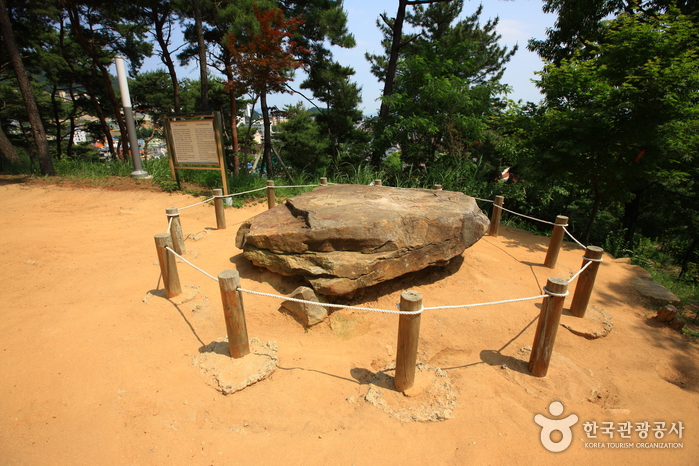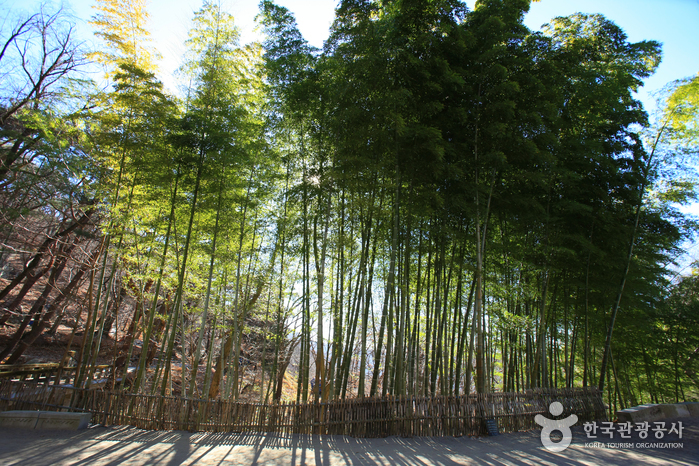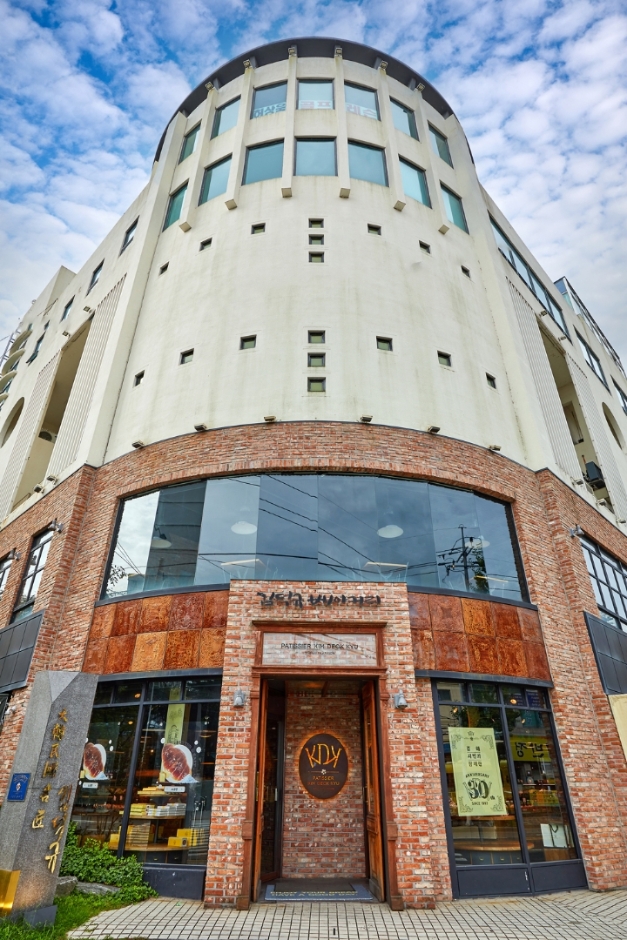Olive Young - Homeplus Gimhae Branch [Tax Refund Shop] (올리브영 홈플러스김해점)
19.3Km 2024-06-27
2F, 2078, Gimhae-daero, Gimhae-si, Gyeongsangnam-do
-
Eulsukdo Migratory Bird Park (을숙도 철새공원)
19.3Km 2021-04-23
1240, Nakdongnam-ro, Saha-gu, Busan
+82-51-209-2031
Eulsukdo Migratory Bird Park, designated as Natural Monument No. 179, is located in the lower part of Elsukdo Island. Renovated in 2009, the park is the central area for migratory bird habitats and ecology tourism. In winter, migratory birds can be seen at the wetlands. Nakdong Estuary Eco Center in the park provides information on various eco-life of the area as well as treat injured wild animals.
Gimhae Gujibong Peak (김해 구지봉)
19.4Km 2021-07-13
Gusan-dong, Gimhae-si, Gyeongsangnam-do
+82-055-331-0086
Gujibong Peak in Gusan-dong, Gimhae in Gyeongsangnam-do is believed to be the birthplace of King Suro, the founder of the Gaya kingdom. The peak was originally named Gusubong (“gu” meaning “turtle,” “su” meaning “head”) after its resemblance to the head of a turtle. The flat part of the peak (the turtle’s “head”) is home to the Tomb of King Suro. On the summit is a southern-style dolmen dating back to the 4th century BC that consists of 5 or 6 support stones and a large cover stone measuring 2.5m in diameter. The cover stone bears the inscription “Gujibongseok,” said to be written by Han Ho.
Gujibong Peak is considered a sacred place by the local people because, according to legend, it is the place where the creation of the Gaya Kingdom took place. During the Japanese colonial rule, the “neck” of the turtle was destroyed by the construction of a mountain road. Years later, a pedestrian road was built to rejoin the neck and restore the feng shui of the mountain.
Gimhae Arts and Sports Center (김해문화의전당)
19.5Km 2022-12-29
2060, Gimhae-daero, Gimhae-si, Gyeongsangnam-do
+82-55-320-1234
The Gimhae Arts and Sports Center is a performance hall for high-class performances. Maru Hall is a multi-purpose theater that also contains a moving orchestra shell with a sound reflection board for a smaller concert hall inside the theater. Nuri Hall is an experimental theater for performances in a variety of themes. The center also features the outdoor theater Aedureum Madang, Yunseul Art Gallery, Media Center, Sports Center, and Aram Learning Center, as well as a café and restaurants.
Jangnim Port (장림포구)
19.6Km 2023-02-06
72, Jangnim-ro 93beon-gil, Saha-gu, Busan
+82-51-220-4502
Jangnim Port is a trending place in Busan that has gained popularity through word of mouth on social media. Administratively, it belongs to Jangnim-dong, Saha-gu, and the name of the port is Jangnim Port after the neighborhood. Because the colorful buildings and small boats floating along the port resemble Venice's Murano Island, its nickname is "Bunezia," meaning Busan's Venice. Due to its beautiful sunset and location on the way to Dadaepo Beach, Jangnim Port has emerged as a new summer resort in Busan, as it is possible to tour in connection with the Amisan Observatory and the Dadaepo Sunset Fountain of Dreams.
Hongnyongsa Temple (Yangsan) (홍룡사(양산))
19.7Km 2025-01-17
372 Hongnyong-ro, Sangbuk-myeon, Yangsan-si, Gyeongsangnam-do
Hongnyongsa Temple, situated on Cheonseongsan Mountain, is renowned for its stunning natural scenery and rich historical traditions. Nearby, Hongnyongpokpo Falls, also known as Mujigaepokpo Falls (Rainbow Falls), captivates tourists with its splendid and invigorating waterfalls. Nestled within lush forests, the temple features a variety of intriguing structures, such as the Gwaneumjeon Hall, the Great Medicine Buddha, and the Sansingak Shrine.
Kim Deok-kyu Bakery (김덕규베이커리)
19.7Km 2024-01-24
20 Guji-ro, Gimhae-si, Gyeongsangnam-do
Founded by Kim Deok-kyu, who is a recognized confectionery master, this bakery becomes crowded with people as early as 8 a.m. when it opens. The bakery’s most popular item among a lot of different breads is garlic cream bread, which everyone buys at least once. It is the most delicious one in this bakery, made by cutting a long plain bread into pieces and filling them with garlic cream of sweet condensed milk and soft whipped cream. The coconut milk bun, combined with crunchy biscuits and sweet and soft coconut cream, is also its best-seller..
Olive Young - Gimhae Samgye Branch [Tax Refund Shop] (올리브영 김해삼계)
19.8Km 2024-04-22
47, Samgyejungang-ro, Gimhae-si, Gyeongsangnam-do
-




![Olive Young - Gimhae Samgye Branch [Tax Refund Shop] (올리브영 김해삼계)](http://tong.visitkorea.or.kr/cms/resource/28/2885928_image2_1.jpg)
 English
English
 한국어
한국어 日本語
日本語 中文(简体)
中文(简体) Deutsch
Deutsch Français
Français Español
Español Русский
Русский